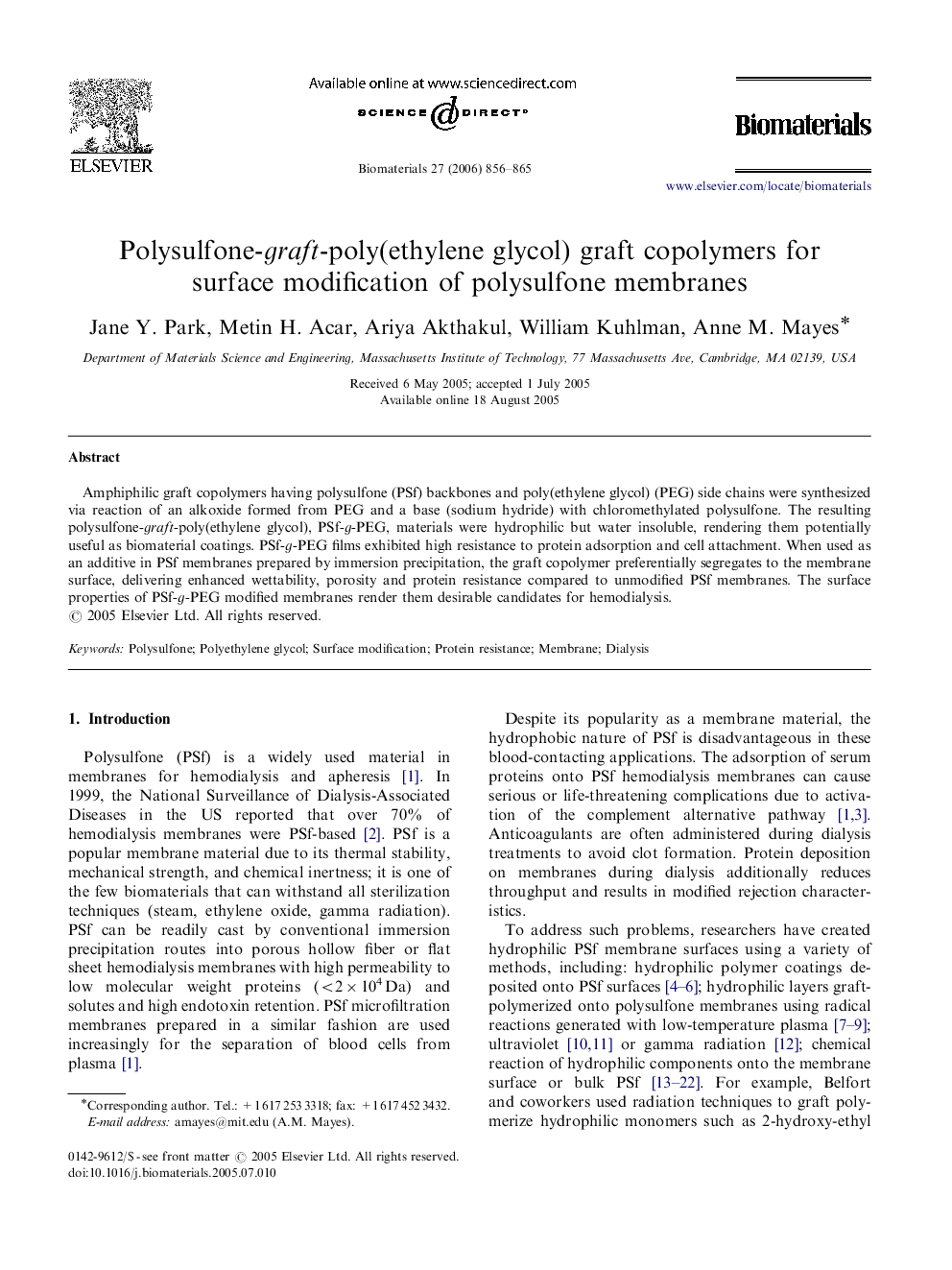| Article ID | Journal | Published Year | Pages | File Type |
|---|---|---|---|---|
| 11657 | Biomaterials | 2006 | 10 Pages |
Amphiphilic graft copolymers having polysulfone (PSf) backbones and poly(ethylene glycol) (PEG) side chains were synthesized via reaction of an alkoxide formed from PEG and a base (sodium hydride) with chloromethylated polysulfone. The resulting polysulfone-graft-poly(ethylene glycol), PSf-g-PEG, materials were hydrophilic but water insoluble, rendering them potentially useful as biomaterial coatings. PSf-g-PEG films exhibited high resistance to protein adsorption and cell attachment. When used as an additive in PSf membranes prepared by immersion precipitation, the graft copolymer preferentially segregates to the membrane surface, delivering enhanced wettability, porosity and protein resistance compared to unmodified PSf membranes. The surface properties of PSf-g-PEG modified membranes render them desirable candidates for hemodialysis.
